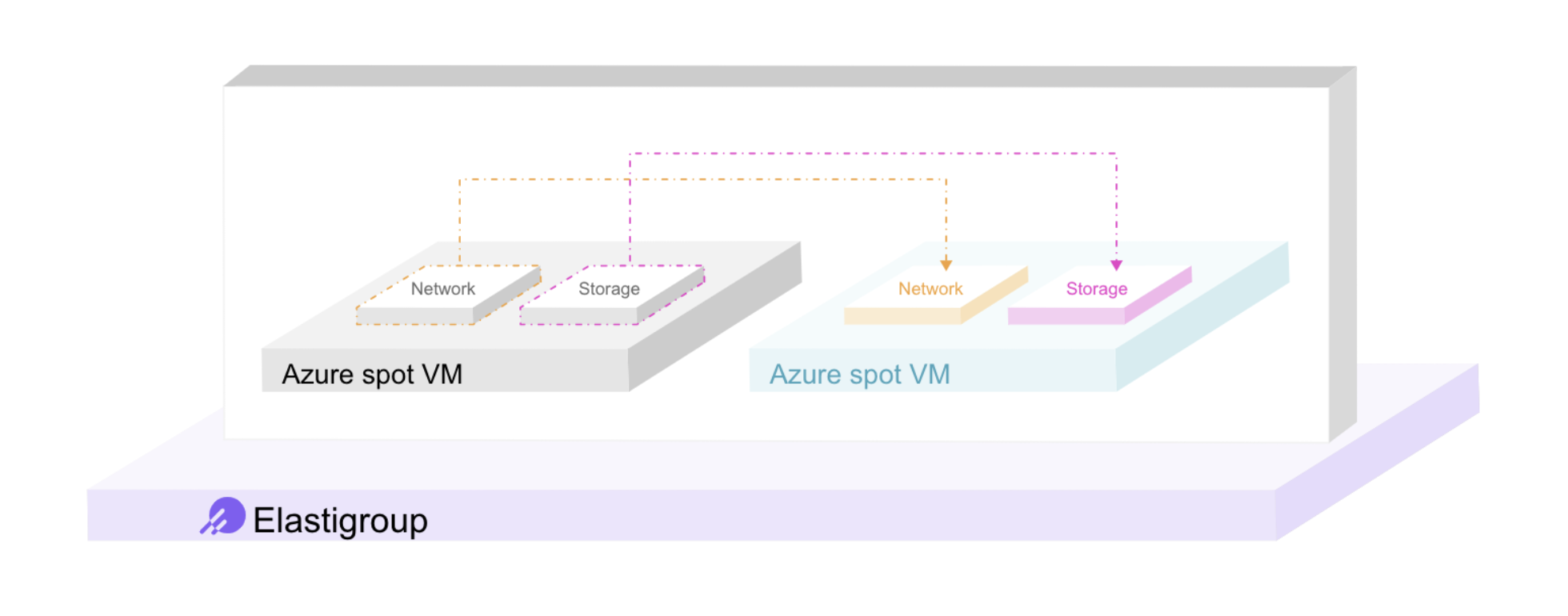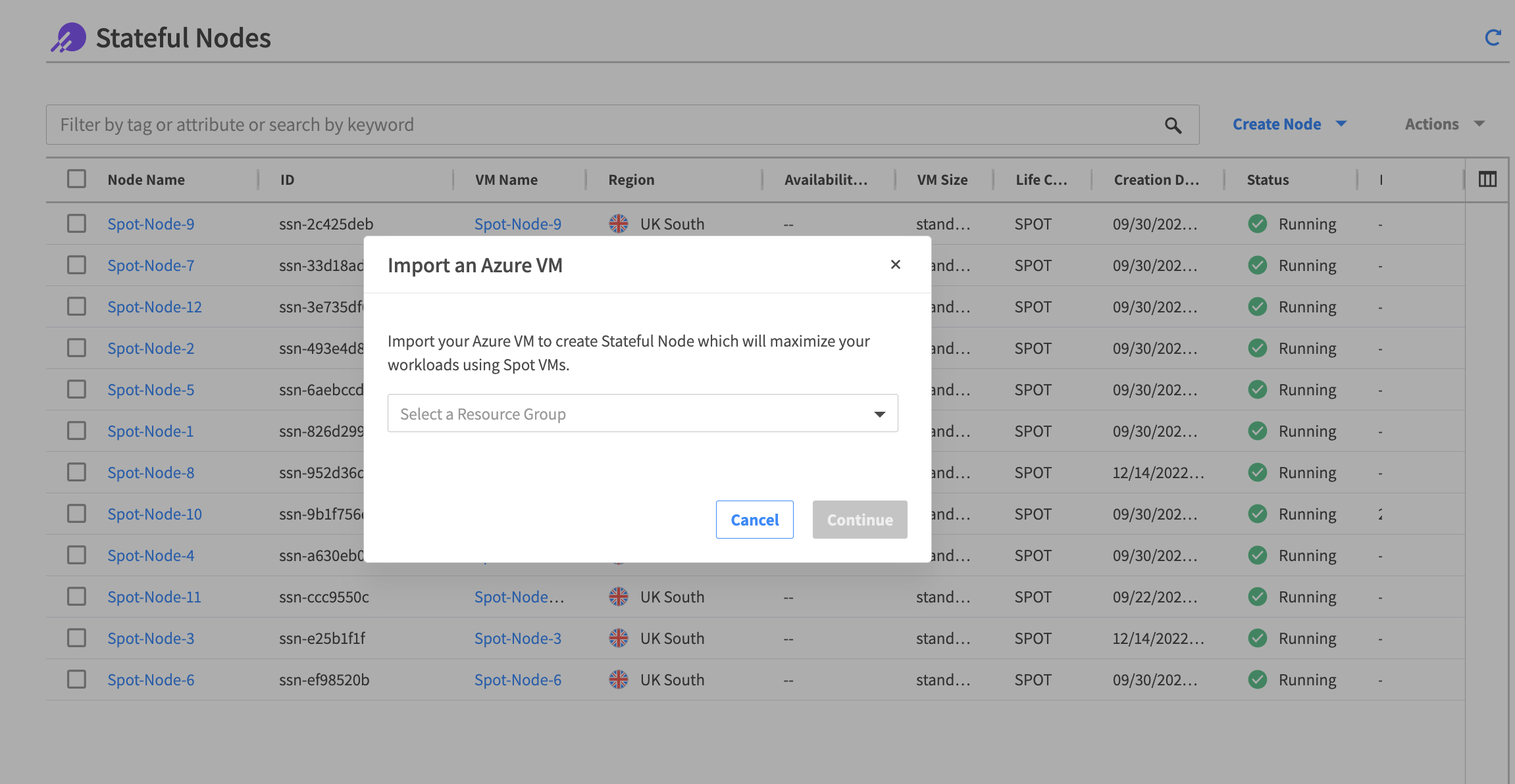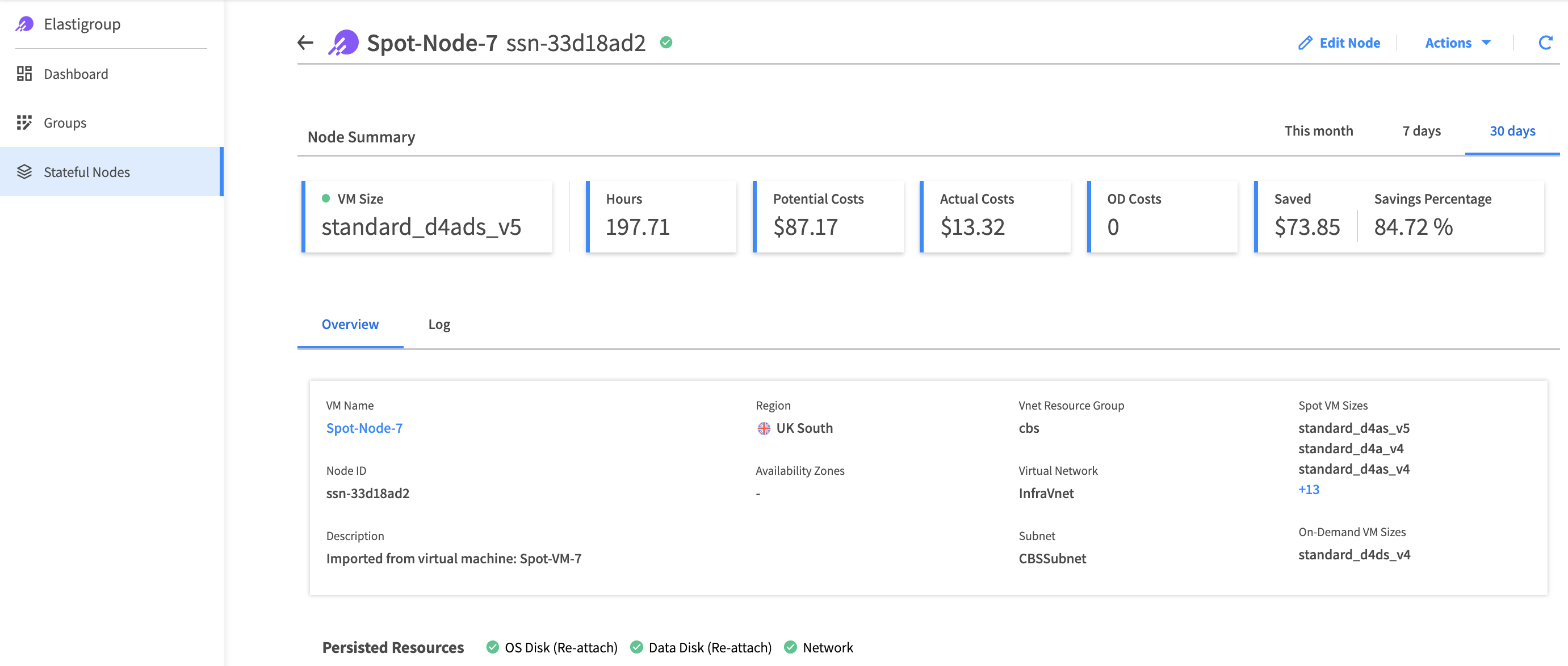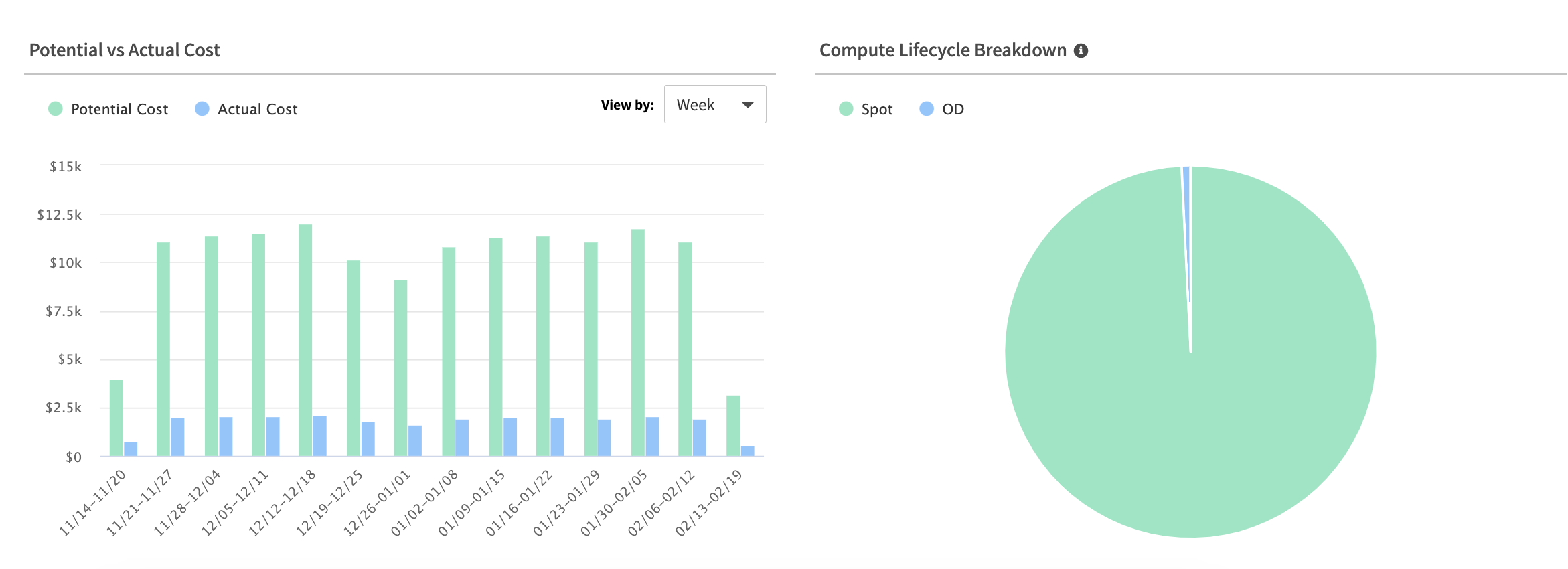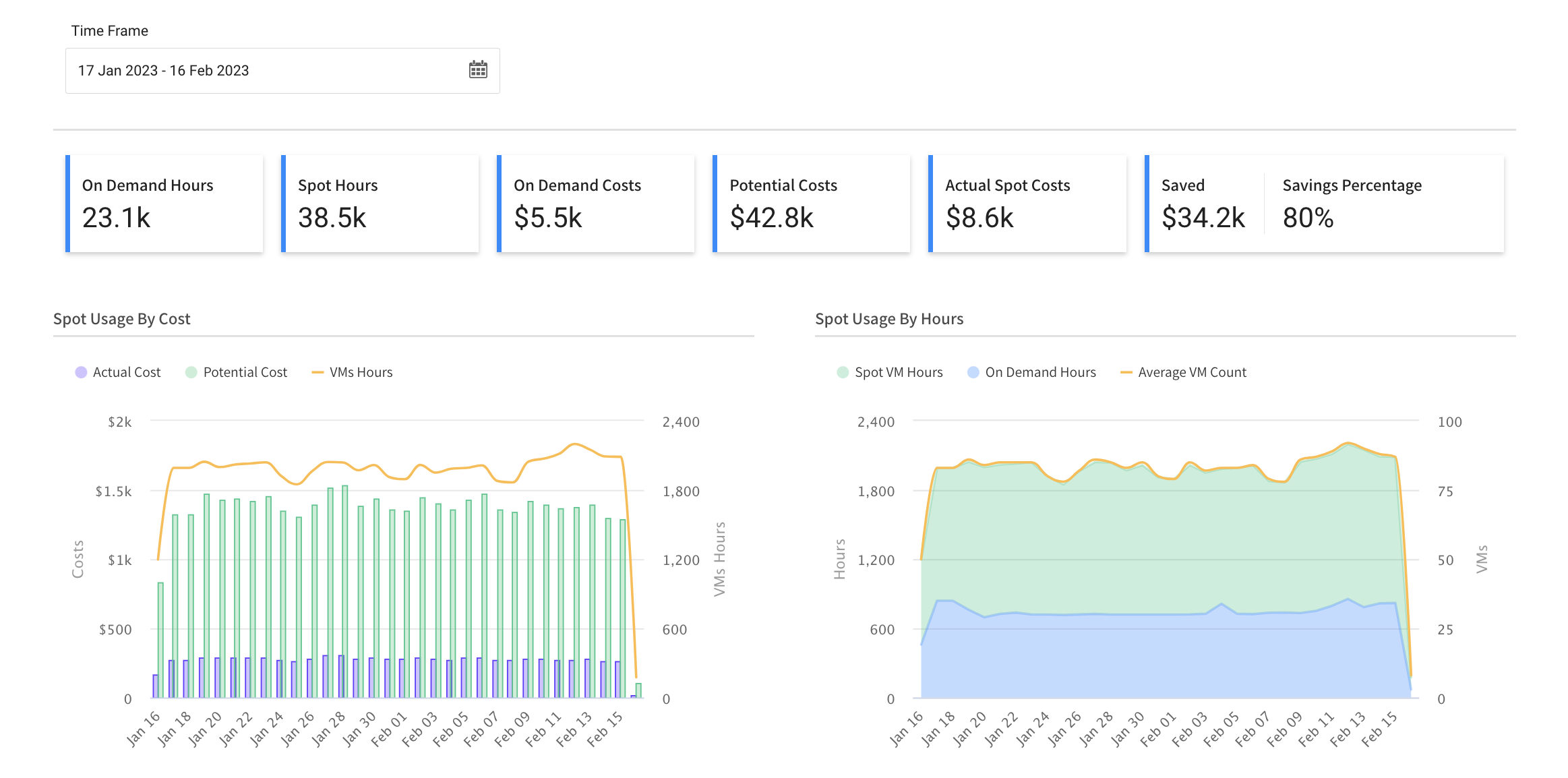
We are excited to announce that Azure Stateful Node is now in General Availability. This unique, proprietary development follows the ongoing success of AWS Stateful Node and the increasing demand from our customers working in Azure.
With Azure Stateful Node, Spot’s customers can now run their stateful compute workloads on Azure with up to 90% immediate cost reduction and maximum availability.
If you’re seeking the easiest, most agile and cost-efficient method for managing your stateful workload fleet in Azure, keep reading to learn about this exciting announcement.
What are stateful workloads and their inherent requirements?
Stateful workloads are cloud workloads that require keeping attached storage volume and network settings persistent at all times.
Some common stateful use cases include:
- ML training VMs
- Data layer (e.g., Mongo, Cassandra, MySQL, Elasticsearch)
- Dev machines
- QA and testing environments
- Gaming applications
- Application servers
- Media servers
- More!
What challenges do stateful workloads create for cost optimization?
Natively, these types of workloads are not “friendly” nor applicable to run using spot capacity that can suddenly be terminated. Therefore, to be on the safe side, customers incur massive on-demand (pay-as-you-go) compute expenses or bind themselves into three-year commitment plans in an attempt to reduce costs.
How does our Azure Stateful Node solve this problem?
Similar to native Elastigroup, Stateful Node for Azure workloads uses the Spot VM spare capacity to run applications that require state persistence.
At all times, Stateful Node keeps your running state and makes sure the attached resources (Storage and Network components) will not be affected by spot replacements/evictions.
With this capability, Spot expands the spare capacity infrastructure technology (a.k.a. spot VMs or spot instances) for all sorts of applications that used to be considered “non-friendly for spots.”
Azure Stateful Node vs. Self-managed spot VMs
When launching a spot VM by yourself, you can define the VM’s eviction policy to deallocate. This means that whenever the VM is evicted, it stops the underlying host and allows you to try and launch the VM again with the same stateful components at a later stage. However, nothing guarantees that the allocation will be successful.
When using Spot’s Azure Stateful Node, we make sure the capacity will be available at any time for your stateful applications once the VM is evicted or proactively replaced.
On top of a simplified platform, Stateful Node has several capabilities that make sure the customer’s workload runs in the most available and cost-efficient state. These capabilities include:
- Fast import process for your existing VMs
- Setting up multiple spot VM types as potential candidates to run on
- Enabling multiple-AZ architecture that allows the Stateful Node to be launched at any defined AZ in any given time
- Fallback to on-demand feature that uses OD capacity in case of any market stability issues
- Seamlessly reverting to spot capacity once it’s back available
- Setting customized running hours for your workload to maximize savings
Via our overview dashboard, the customer can closely monitor their organization’s actual workload cost spend, lifecycle coverage, and actual savings generated by using the Stateful Node product.
In addition, we’re providing the option to drill down into a specific Azure subscription and investigate the potential savings and coverage as well.
We also help automate your infrastructure management in the most simplified way by:
- Setting up running hours for your Stateful Nodes
- Defining startup/shutdown scripts to run on each machine
- Supporting API/Terraform/SDK provisioning
How it already works for a large UK B2B FinTech vendor
One leading UK FinTech vendor is already using Azure Stateful Node. The company develops core platforms for financial institutions and service providers, from banks to mortgage advisers. Their dev and testing environment runs mostly on Azure, and mostly consists of stateful, single-VM workloads.
With Azure Stateful Node, the vendor achieved 70% compute cost savings in their dev and testing environment. This allows them to release better products faster than ever, while freeing up budgets for quality infrastructure projects.
The vendor now plans to deploy Azure Stateful Nodes in their Azure production environment, which is four times the size of the dev and testing environment. This move will result in massive cost savings for their business clients and will help further fortify their competitive position.
How do you start working with Azure Stateful Node?
You can start running your first stateful Azure workload right now. We took special care in making both import and setup quick and easy. For further guidance, visit the Documentation page.
Importing an existing stateful VM takes around 60 seconds.
You can also spin up your first workload from scratch, with our preset recommended configurations. For further guidance, visit the Documentation page.
With Azure Stateful Node, enterprises can enjoy the advantages of Azure compute to their fullest, getting up to 10 times more compute power per their existing budget, without compromising availability.
All this comes down to one thing: Improved competitiveness of your products and services, in both speed and quality, without adding a single buck to your budget.
Ready to get your “unfair” competitive advantage in Azure?
Request your own personalized demo with our solution architects.


